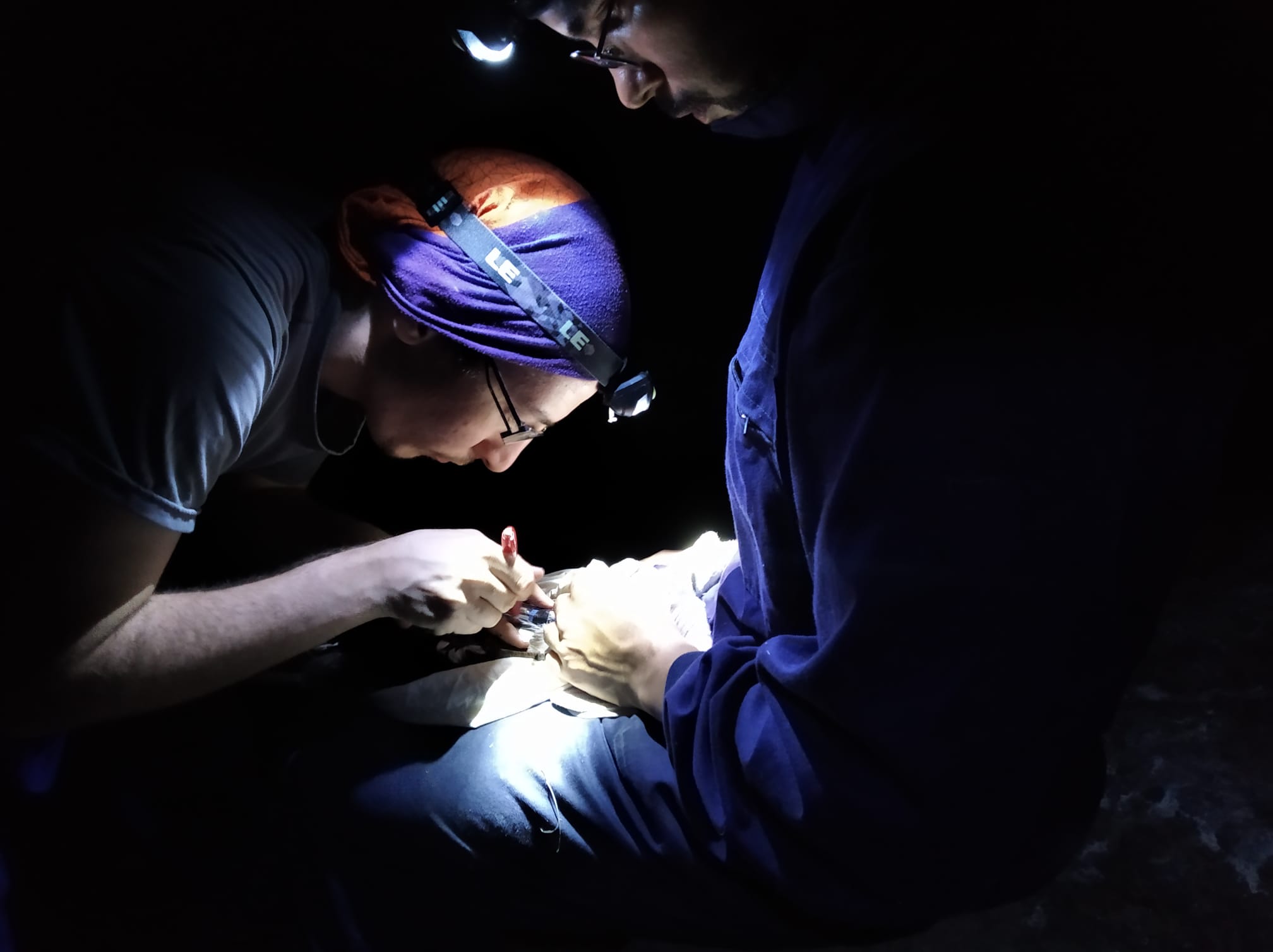20-07-2023
Diego Vicente Sastre and the migratory phenology of seabirds
Barcelona, July 20, 2019- Diego Vicente Sastre, pre-doctoral researcher at the Seabird Ecology Lab and the Biodiversity Research Institute of the University of Barcelona, in the third year of his Phd. His research is centered on learning about the causes and consequences of the migratory phenology of marine birds. In order to follow their migration, Diego marks three species of Shearwate of the genus Calonectris that breed in the Atlantic and Mediterranean islands. He marks them with geolocalizers for light levels and follows their reproductive performance. Understanding how these two indicators are related to each other, allows for understanding of the impact of the modifications that occur and act accordingly.
The migration of Shearwaters and its effects on reproduction
At the Seabird Ecology Lab, Diego has been working to unravel the mysteries of the migration of the Atlantic and Mediterranean baldrigues of the genus Calonectris. In 2019 he started his investigation that focuses on the migratory phenology of three species of Shearwaters: he seeks to understand the causes and consequences of the variations in this phenomenon. "Specifically, I want to understand the external and internal causes that advance or end this phenology and the consequences that these variations have for the birds" explains Diego.
For his thesis Diego raises several questions: do the individuals that experience the loss of eggs or chicks migrate earlier to the wintering areas? Do those who fail to reproduce select the same areas to spend the winter? If an animal is successful in its migration, is it more likely to be successful next year? And if you migrate earlier, do you move to more distant areas or do you stay closer to be more successful in the following season? These questions helps to determine the long-term consequences of these phenological variations on shearwater populations.
In terms of fieldwork, Diego has been leading a monitoring and marking campaign for Atlantic Shearwaters in Gran Canaria since 2019, first as a technician and then as a predoctoral researcher. It is a colony that the Seabird Ecology Lab has been following for 22 years. During this campaign, nests are closely monitored and biological samples such as blood, feathers and feces are collected to obtain valuable information about the health and genetic characteristics of the birds. In addition, two types of devices are used: GPS devices to record feeding movements during the breeding period and geolocators to study annual migration patterns. The data collected through geolocators is what he uses for its research. With each migration season and each new data collection, Diego and his team are looking for answers to questions surrounding the lives of Shearwaters and how their migrations influencse their reproductive success.
Diego’s research work will not only shed light on the complex migratory processes of Shearwaters of the genus Calonectris, it will also provide valuable information for the conservation of these migratory seabirds. Understanding the factors influencing migration and the effects on reproduction is essential to developing effective management strategies and ensuring the long-term survival of these species.
